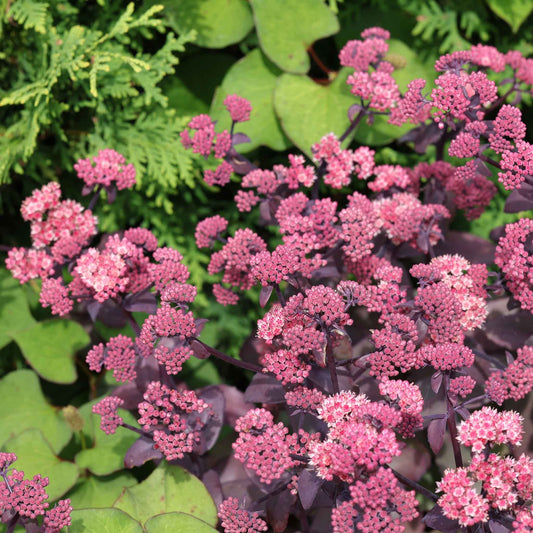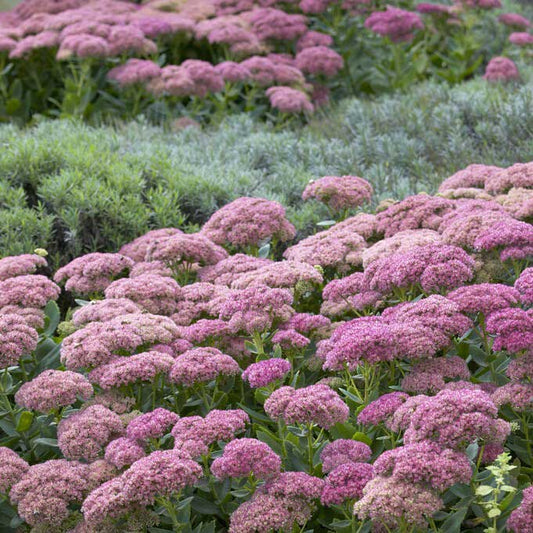-
main-collection-product-grid

Sedum Roots - Chocolate Cherry
Provides late season color summer through fallSedum Roots - Chocolate Cherry
Provides late season color summer through fallRegular price As Low As $18.99Regular priceUnit price per -
main-collection-product-grid

Sedum Roots - Autumn Joy
Blooms produce nectar late into summer and fallSedum Roots - Autumn Joy
Blooms produce nectar late into summer and fallRegular price As Low As $17.99Regular priceUnit price per
Everything to know about sedum roots
- Performs best in hot and dry climates
- For use in rock gardens or as a ground cover
- Blooms offer landing pad and rich nectar for pollinators
- Stores water in leaves, stems, and roots
Why Should You Grow Sedum?
Sedum is also known as stonecrop, a type of succulent plant that is prized by gardeners for its low maintenance and hardiness. Sedum plants have fleshy leaves and stems that store water, allowing them to thrive in dry, sunny environments.
Throughout the past few years, succulents have gained popularity as house plants, but we are also seeing them used on wreaths, living walls, and even in bridal bouquets. Plant enthusiasts love the variety of texture and color that succulents offer, as well as their ease of care. If you are ready to move your love of succulents from indoors to outdoors, there is no better plant to start with than sedum. As one of the more popular succulents with over 500 varieties, sedum can be grown in pots or directly in the landscape.
Where to Start with Growing Sedum
Starting sedum with leaf cuttings is common, though it is a much slower process to grow it as an established plant in your landscape. Planting sedum roots is the preferred method and will give your efforts a jumpstart as the plant will mature into a full grown perennial within the first few growing seasons.
How to Care for Sedum Plants
The roots of sedum plants are shallow and fibrous, and they help the plant anchor itself in the ground and absorb water and nutrients from the soil. Gardeners will want to have the right conditions to grow sedum. Some tips for caring for sedum plants with healthy roots include planting them in well-draining soil, providing plenty of sunlight, and watering the plants only when the soil is dry. Sedum plants are also tolerant of a wide range of temperatures, making them a good choice for gardeners in many different climates, particularly dry areas.

